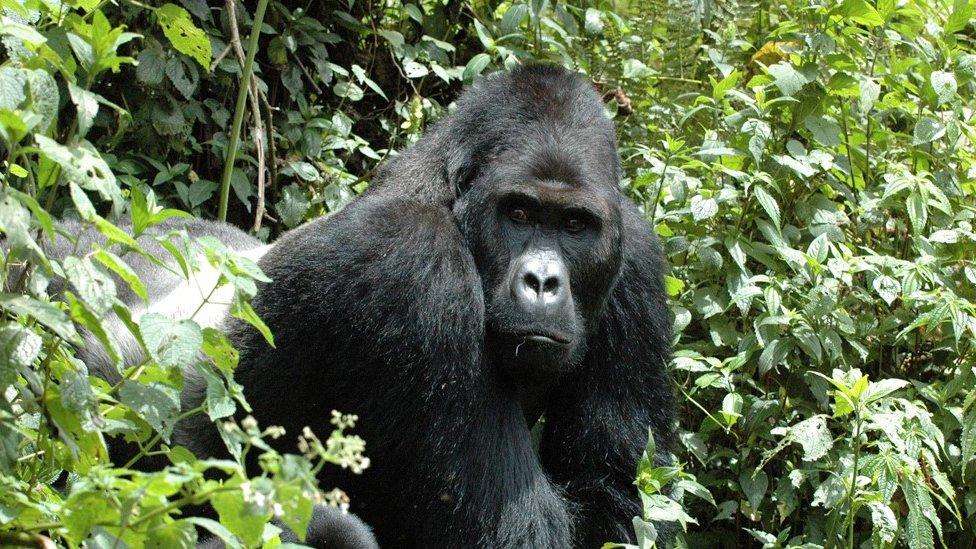Giant pandas rebound off endangered list
- Published

Decades of conservation efforts have led to a rebound in the number of giant pandas
The giant panda is no longer an endangered species, following decades of work by conservationists to save it.
The official status of the much-loved animal has been changed from "endangered" to "vulnerable" because of a population rebound in China.
The change was announced as part of an update to the International Union for Conservation of Nature (IUCN) Red List, external.
But the update also brought bad news. The eastern gorilla, the world's largest primate, is now endangered.
Efforts by China, which claims the giant panda as its national animal, have brought its numbers back from the brink. The latest estimates show a population of 1,864 adults.
Eastern gorillas threatened with extinction
There are no exact figures for the numbers of cubs, but estimates bring the total number of giant pandas to 2,060.
"Evidence from a series of range-wide national surveys indicate that the previous population decline has been arrested, and the population has started to increase," said the IUCN's updated report.
"The improved status confirms that the Chinese government's efforts to conserve this species are effective," it added.

The eastern gorilla is now on the endangered species list
But the rebound could be short-lived, the IUCN warned. Climate change is predicted to wipe out more than one-third of the panda's bamboo habitat in the next 80 years.
"And thus panda population is projected to decline, reversing the gains made during the last two decades," the report said.
It added: "To protect this iconic species, it is critical that the effective forest protection measures are continued and that emerging threats are addressed."
John Robinson, a primatologist and chief conservation officer at the Wildlife Conservation Society, told the AFP news agency: "When push comes to shove, the Chinese have done a really good job with pandas.
"So few species are actually downlisted, it really is a reflection of the success of conservation," he told the AFP news agency."
A surge of illegal hunting has taken the eastern gorilla in the other direction, reducing its numbers to just 5,000 across the globe.
Four out of six of the Earth's great apes are now critically endangered - the eastern gorilla, western gorilla, Bornean orangutan and Sumatran orangutan.
"Today is a sad day because the IUCN Red List shows we are wiping out some of our closest relatives," Inger Andersen, IUCN director general, told reporters.
The number of eastern gorillas has declined more than 70% in the past two decades.
The IUCN Red List includes 82,954 species, both plants and animals. Almost one third, 23,928, are listed as being threatened with extinction.
- Published4 September 2016

- Published8 August 2016

- Published8 May 2016

- Published2 June 2016
